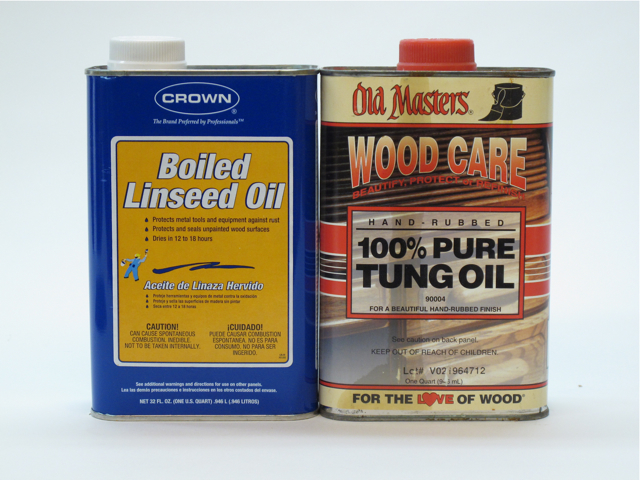We may receive a commission when you use our affiliate links. However, this does not impact our recommendations.

Boiled linseed oil is not actually boiled; it’s raw linseed oil with metallic driers added. Pure tung oil is usually labeled 100% Tung Oil.
Boiled linseed oil and 100% tung oil are the two widely available drying oils. Though called “drying oils” both dry adequately only when applied very thin. If the excess isn’t wiped off after each coat, the film will be soft and remain sticky for a long time. Eventually, the film will dry, but it will be wrinkled and soft.
Be aware that some manufacturers label their wiping varnish, which is varnish thinned about half with mineral spirits so it’s easy to wipe on wood, “tung oil.” This started with Homer Formby in the late 1960s. Wiping varnish is a very good finish, but it’s almost the polar opposite of tung oil. Like all varnishes, it dries hard and can be built up on the wood.
You’ll know that the product is wiping varnish and not tung oil if a thinner is listed on the can. Tung oil is never sold thinned.
Here’s a comparison of boiled linseed oil and 100% tung oil.
Boiled linseed oil has driers added to make it dry much faster than raw linseed oil, which can take weeks or months to dry. The drying is adequate only when the excess is wiped off after each application. Tung oil doesn’t contain driers. It takes two or three days to dry adequately in a warm room when all the excess is wiped off.
It usually takes four or five coats of tung oil, sanded after each, to get a nice even satin sheen. The surface will be rough and spotty until this point. That’s why you have to sand.
Sanding is unnecessary with boiled linseed oil, except after the first coat. Then one or two more coats with a day between each will produce an even satin sheen.
The same number of coats of tung oil will be more water resistant than boiled linseed oil. In fact, boiled linseed oil won’t be water resistant at all. The surface will dull after short contact with water.
Both oils will produce a slight orange coloring (called “yellowing”), which will darken as the finish ages. The darkening occurs even inside the cans, so if your cans are old, you’ll notice that the finish is quite orange when viewed in a glass container. This isn’t a problem, however, and both finishes are good until they gel badly in the can, which can take a very long time to happen.
Generally, I don’t recommend using pure tung oil as a finish because of the difficulty applying it to an even sheen. But if you’re willing to go to the trouble and want a very thin finish that is more water resistant than boiled linseed oil, tung oil is a good choice.
Here are some supplies and tools we find essential in our everyday work around the shop. We may receive a commission from sales referred by our links; however, we have carefully selected these products for their usefulness and quality.








